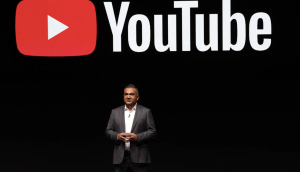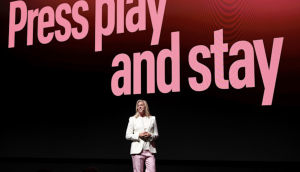John Price and Nicole Fawcette of Toronto-based Youthography are at the Electronic Entertainment Expo (E3) in LA, covering the latest in gaming evolution – and sussing out the resulting new opportunities for MiC readers.
After Monday’s star-studded Microsoft press conference, the bar for Sony and Nintendo was raised quite high to deliver innovative technology matched with new AAA title announcements. While the Nintendo press briefing gathered such a crowd that it had to be split over two venues, reaction from the E3 press junketers was considerably less empathic. Read on for what we think are the biggest developments from both Nintendo and Sony on the second day of E3 2009.
Nintendo: Innovation overshadowed
The cold fact of the matter is that no other manufacturer besides Microsoft would release a controller-less control pad (see yesterday’s article for more information). However, for a number of press, industry members and consumers, Nintendo’s unveiling of the Wii Motion Control Plus (an adapter for the Wiimote that makes action much more fluid and precise) was met with disappointment. You can expect Nintendo’s showing to be heavily criticized for their inability to achieve a ‘wow’ factor in the innovation department. While Microsoft’s Project Natal is an impressive win, let’s not totally throw the baby out with the bathwater – Nintendo continues to think progressively in order to enhance the Wii experience for all types of gamers.
Moving on to the Sony press conference, in an attempt to join the motion control craze, the PlayStation 3 revealed a fairly polished wand-ish remote. The wand, equipped with a glowing orb at the top, works in tandem with a camera placed above the users TV, and is utilized to bring the player into the game environment. Unlike Microsoft’s body control technology, the PlayStation still relies on a physical controller to transport the player into the screen, and like Nintendo, requires an accessory to do it.
What we love: More precise motion control. We’re now closer to perfecting motion-based games.
What we don’t love: Nintendo foreshadowed a piece of hardware called the Vitality Sensor meant to ‘elevate your Chi’ (i.e. games to release stress and/or promote sleep). The last time we checked, games were about adrenaline rushes. Not falling asleep.
What this means to you: Between Nintendo, Sony and Microsoft, the race is on for futuristic innovation today. Despite the fact that this innovation is meant to lower ‘barriers to play,’ competition between the systems can leave consumers wondering which is the best choice. Now that all three manufacturers are starting to support motion control, the market could potentially be saturated and brand tones may fade as they pursue a casual marketplace.
Go PSP Go
In October 2009, Sony will drop the much-rumoured (and worst kept secret ever) PSP Go. A smaller, lighter version of the PSP – the updated handheld features a clean front interface with a slider control pad (think slider-style mobile phones). What’s most different is that Sony is totally doing away with the UMD – a proprietary disc used to hold games and movies for the PSP. The Go will only use downloadable content – all games and movies will be transferred using an online system instead of relying on a disc.
What we love: a dedicated effort to digital content and less game packaging collecting dust on our shelves.
What we don’t love: the uncertainties involved with downloading game software – how long will it take? How much will it cost? What’s the return policy on buggy software? We want answers!
What this means to you: Digital and downloadable content opens up a slew of opportunities to engage with game properties like never before. There is room to bypass the red tape involved with packaging, retail, etc. Content is now more easily distributed, and at a much lower cost. All good news and we’re happy to see it finally happening.
‘Fanboy’ service
Today we saw a lot of exciting game announcements:
• New Super Mario Brothers Wii (Wii)
• Metroid (Wii)
• DeadSpace: Extraction (Wii)
• The Conduit (Wii)
• The Last Guardian (PS3)
• Final Fantasy XIV Online (PS3)
• Metal Gear Solid: Peace Walker (PSP)
• Little Big Planet (PSP)
• ModNation Racers (PS3)
• Agent (PS3)
We encourage you to browse the internets and learn more about these titles. What they represent is a mix of new iterations from beloved franchises and/or superstar development teams (like Team Ninja), or legendary game makers Hideo Kojima (Metal Gear Solid) or Fumito Ueda (Ico/Shadow of the Colossus).
What we love: more games featuring our favourite characters (i.e. Mario, Solid Snake, Sam Fisher), as well as new IPs from reputable studios. These games are directly aimed at the hardcores.
What we don’t love: there’s not a lot to dislike, but less sequels and more original content is probably the only feedback we can offer.
What this means for you: good games, with good characters and a solid story never goes out of style. It’s the fan service that a hardcore game audience craves, mixed with innovation and fresh gameplay. However, the best franchises are not necessarily the tried and true. We encourage you to do your research and keep your ear to the ground in order to stay current in today’s cluttered game market.
John Price (john@youthography.com) is director of youth marketing with Youthography. Nicole Fawcette (nicole@youthography.com) is a research and strategy supervisor with Youthography. Both are avid gamers and love this assignment. Follow John & Nicole’s E3 updates on twitter at Twitter.com/youthography.























